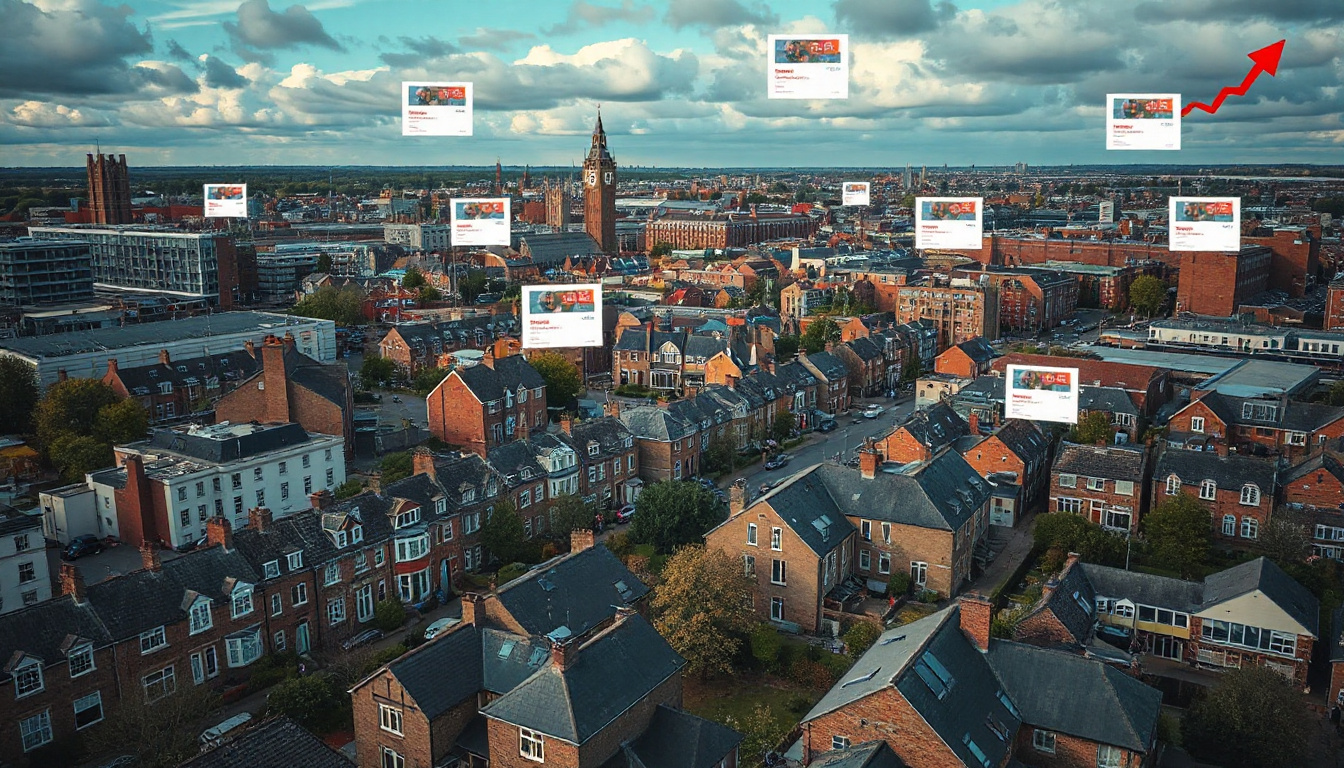Understanding the Current Landscape of UK House Prices
In 2025, the property market changes fast. House prices seem set to rise. Many people worry about economic limits and new government rules. A new stamp duty plan starts. Trade tariffs from other countries add strain. Buyers and HMO investors must check their plans once more.
A Busy Start to the Year
Early this year, a lot happened in the house market. Many buyers acted quickly to buy a home. They wanted a good deal before the stamp duty rules changed on April 1. Stamp duty limits went from £425,000 to £300,000 for first-time buyers and from £250,000 to £125,000 for home-movers. This rush led to busy days, but now things slow down.
Halifax data shows that house prices dropped 0.5% in March. Demand did not grow as the deadline got close. The Nationwide House Price Index shows no change in March either. This calm makes people question what will come next as 2025 goes on.
Shifting Economic Factors and Their Impacts
New factors change how buyers choose. Trade tariffs and rising inflation squeeze home budgets. Households pay more each day. Buyers face higher living costs. These limits may stop some from getting a new home.
Some signs look good. If the Bank of England cuts interest rates to fight inflation, mortgage costs may fall. But rising costs when buying a home can cancel out any gains from lower rates.
The Latest House Price Trends
Recent numbers show mixed trends across the UK. HM Land Registry notes that January 2025 had a 4.9% yearly rise, with the average home costing £268,548. This sum is about £13,000 higher than last year. Still, average price numbers do not show all the regional shifts.
Northern Ireland leads with a 9% growth rate. Wales grows by 6%. England and Scotland grow by 4.8% and 4.6%. London, with an average cost near £564,000, grows the slowest at 2.3%. This gap may help investors who seek markets outside the capital.
Property Type Variance
Each type of property shows different trends. Zoopla data shows that the gap between houses and flats is at a 30-year peak. A typical house is 67% more expensive than a typical flat. Demand for space, born from a past pandemic, and the cost to run flats play a part in this gap.
The Outlook for Asking Prices and Future Growth
Rightmove data shows that asking prices went up a modest 1.1% early in March. Competition in the market stays at the highest point in ten years. Colleen Babcock, a well-known expert, says it is key to price homes well and show them in a neat way to win buyers.
Many experts now see house price growth slowing in 2025 because more homes come to the market. Still, demand stays strong. Zoopla predicts that some northern areas will see good growth. Savills sees a rise between 2.5% and 5%, based on the region.
Marc von Grundherr, director at Benham and Reeves, stays positive. He feels that yearly market growth will hold strong, even with a stormy economic scene.
Conclusion
The UK house market keeps changing through 2025. Homebuyers and property investors, and those in the HMO sector, face many hard choices now. Some challenges come from higher costs and changing rules. Yet, the need for homes stays firm. By keeping up with news and switching plans when needed, investors can set themselves to make smart calls in a market that does not stand still.
Sources:
- MoneyWeek. (2025). What’s happening with UK house prices? Latest market moves. Retrieved from MoneyWeek
- Halifax House Price Index. Retrieved from Halifax
- Nationwide House Price Index. Retrieved from Nationwide
- Zoopla Property Insights. Retrieved from Zoopla
- Rightmove House Price Index. Retrieved from Rightmove
- HM Land Registry. Retrieved from HM Land Registry
Disclaimer: This article has been generated by AI based on the latest news from Google News sources. While we strive for accuracy, we recommend verifying key details from official reports.




